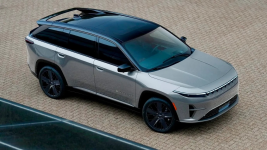The question I'm trying to bring up is this. Will Stellantis learn from the mistakes from others? FCA was unique in all of last decades California compliance cars. The first Fiat 500e was treated as both an R&D project and a production run up. When the next generation arrived, the production was vastly streamlined and the car was designed around the battery electric power. Yet the new Fiat 500e retains many of the features of its previous generation; front drive , simple controls, and the battery design.
The challenges to EV adoption are:
1. Fire risk, the high voltage,and high power of the S increases the risk. Hopefully they will have a solution when production begins.
2. Repairability, if the designers have done their job correctly, there will be some robustness in the vehicle. The battery case will have better protection than other EVs.
3. Range anxiety, even if one cuts the warm weather range of the S n half, it is still well above the average commute in North America.
4. Charging anxiety, well that's a new one.

Battery electric vehicles aren't the only thing which perform poorly in frigid temperatures, their charging stations have even more problems. Stellantis is confronting this challenge with their Free-2-Move business unit along with building out a high-speed charging network with other automakers. Level-2 charging speeds and times can be as important as high-speed charging time in cold weather.
5. Sales, or lack of sales, the early adopters have already bought an EV. The Tesla brand's sales indicate our market was moving beyond the early adopters and reaching into the mass market. Sales of BEVs are now stalling as the issues previously listed now come to light. Now we know about the Wagoneer S and have a pretty good idea of what the Recon will be. The next Cherokee remains a mystery beyond we know what platform it will be built on and some solid clues of where it will be built. If the Cherokee has a decent sales volume, the S and Recon can have very low sales and still be viable using flex manufacturing. Low sales can be a good thing if a company is also building out a charging network to accompany the battery electric products in their lineup. One of the reasons for all the dead robots in Chicago last week is that Tesla has had great sales, but didn't build up their charging network to match. The Ram ProMaster EV is a sold out because a fleet can build their own charging station setup. Ram Commercial offers a lot of assistance to the customers for the effort.


